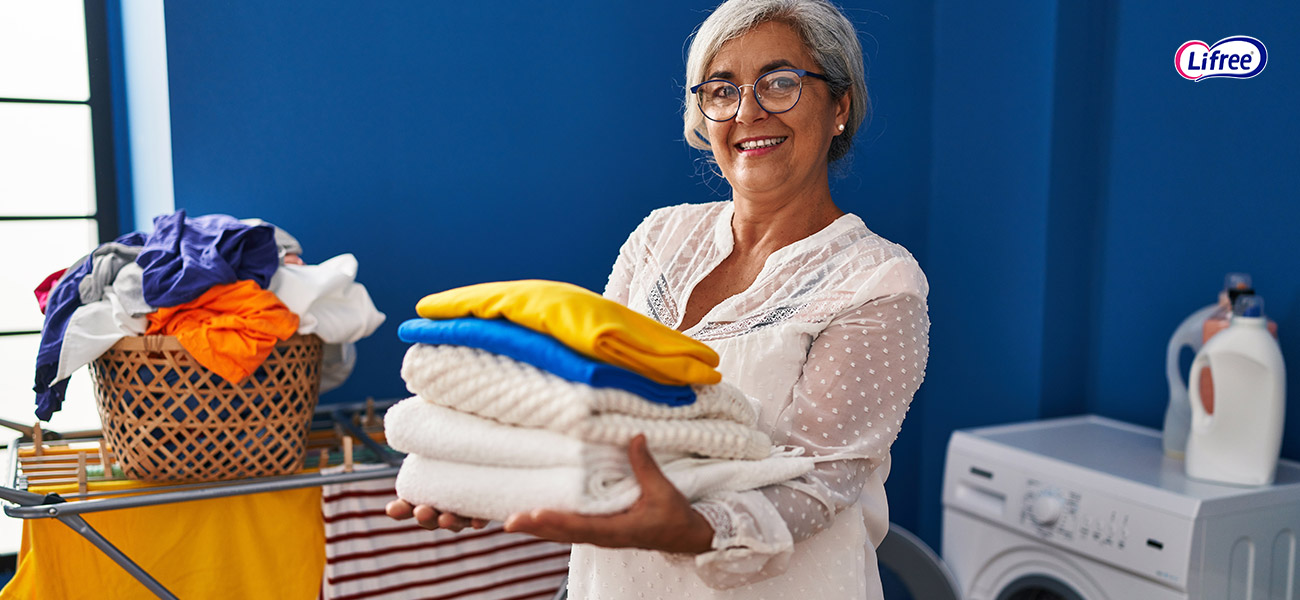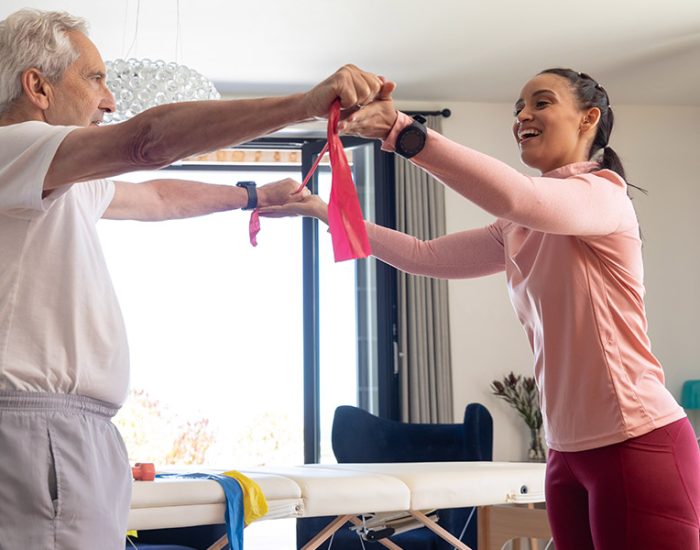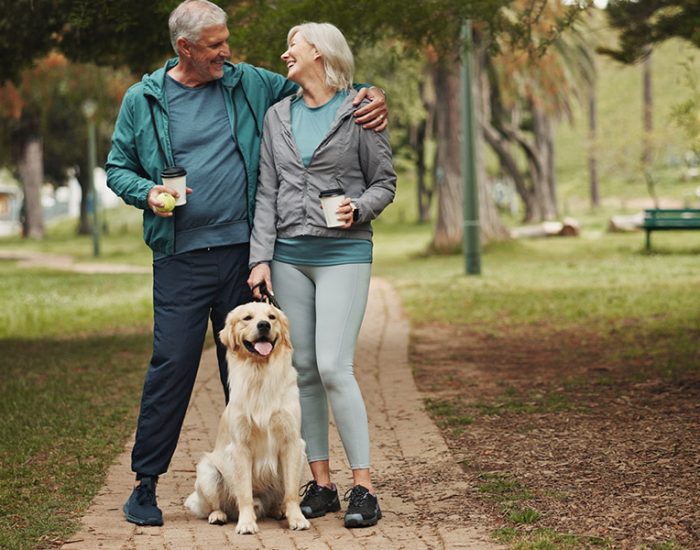10 Tips for Hygiene of Clothes and Bedding for Grown-Up Diaper Users
Taking care of someone who wears adult diapers isn’t just about changing them on time. What many people don’t realize, until they’re doing it every day, is how much effort goes into keeping the surroundings clean — especially clothes and bedsheets. Things can get messy fast. Leaks happen. Accidents happen. And if you don’t have a system in place, the laundry piles up before you know it.
One thing I’ve learned is that it’s not about doing everything perfectly — it’s about finding small habits that make things easier. I remember the first few weeks I was helping my dad after surgery. I was overwhelmed. Diapers were new to both of us. But over time, we figured out a rhythm. It wasn’t fancy, but it worked.
For starters, don’t skip the waterproof layer. Honestly, even an old plastic sheet under the bedsheet is better than nothing. You don’t realize how much that saves you until the first real leak. Cleaning a mattress is way worse than throwing a towel in the wash.
Clothes — stick with cotton. Loose-fitting, breathable stuff. Synthetic materials trap moisture and heat. Not great if someone’s in bed for long hours. I even swapped out some of my dad’s older pajamas for cotton kurta-style tops. Easy to wear, easy to wash, and they dry quickly too.
Now here’s something I learned the hard way — always rinse things before putting them in the machine. If something’s badly soiled, rinse it under cold water. Don’t just dump it in. Cold water lifts stains better, and it stops the smell from locking in. I keep a separate bucket just for this purpose. Not pretty, but super helpful.
Washing itself doesn’t need to be complicated. Just add a bit of Dettol or a laundry sanitizer if you want. Don’t go overboard. Your regular detergent works fine most days. But if something smells off even after washing, that extra bit of disinfectant helps. Just don’t use strong perfumes. My dad’s skin reacted badly to one once, so now I always stick to a fragrance-free wash.
Drying — nothing beats sunshine. Even if the clothes are technically clean, hanging them in the sun makes them feel fresher. And yeah, sun helps kill germs too. On rainy days, I use the fan or dryer, but sunlight is the best when it’s there.
It also helps to separate used and clean stuff clearly. I use two baskets — one with a lid for dirty laundry, and one open for fresh clothes. Sounds basic, but when you’re tired, you’ll be glad the clean clothes aren’t mixed up. Also helps with smell control. You’d be surprised how fast things can start to stink if you leave used sheets in the open.
One thing I do now that I wish I started earlier — smaller laundry loads, more often. It used to feel easier to wait a few days, but then you’re stuck with a mountain of stuff. Now I just wash every other day. It’s less stressful. Plus, I never run out of clean clothes when I need them.
And yeah, not everything needs to be washed hot. Check the tags. Towels and sheets? Hot wash is great. But some clothes shrink or get ruined. Warm water works fine most days.
At the end of the day, it’s not just about hygiene. It’s about self respect too. Clean clothes, fresh bedding — it helps the person feel better about themselves. My dad may not say much, but I know when he’s comfortable, when he’s not worried about odors or rashes, his whole mood changes.
It’s not easy being a caregiver. And if you’re the one using the diapers yourself, it’s not easy either. There’s a lot of emotional stuff that comes with it. But small routines like this — they really help. You don’t need expensive tools. Just some patience, a few hacks, and the willingness to adjust.
Honestly, most of what I’ve shared came from trial and error. And talking to others going through the same thing. So if this helps even one person not feel overwhelmed, I’d say it’s worth it.
FAQ’s
2. How frequently should bedding and clothing be changed for adult diaper users?
For adult diaper users, clothing and bedding should ideally be changed daily or whenever they become soiled. If there's leakage or spillage, immediate changes are necessary to prevent skin infections and discomfort. Nightwear, undergarments, and bed linens that come into direct contact with the diaper area must be washed thoroughly and regularly. In cases of heavy incontinence or during hot and humid seasons, changing twice a day may be needed. This not only maintains hygiene but also helps reduce odour and promotes skin health. A consistent laundry schedule ensures that backup clothes and bedding are always available, which is especially important for caregivers managing elderly or bedridden patients.
3. What is the best way to wash clothes and bed linens used by diaper users?
The best way to wash clothes and bed linens used by adult diaper users involves using a mild detergent with disinfectant properties. Start by rinsing heavily soiled items in cold water to remove waste residue. Follow this with a machine wash using hot water (above 60°C) to kill germs. Adding a cup of white vinegar or a disinfectant fabric additive can boost cleanliness and eliminate lingering odours. Avoid fabric softeners as they may cause skin irritation. Always dry items in direct sunlight if possible, as UV rays act as a natural disinfectant. If indoor drying is required, ensure the area is well-ventilated. Store cleaned items in dry, clean areas to avoid recontamination.
4. Are there special detergents recommended for cleaning incontinence-related laundry?
Yes, there are detergents specifically designed for sensitive skin and incontinence-related laundry. These detergents are fragrance-free, hypoallergenic, and contain antibacterial agents to remove germs and odours effectively. Some also include enzymatic cleaners that break down protein-based stains and waste residues. It's important to avoid harsh chemicals, bleach, or strong perfumes that can irritate delicate or already compromised skin. For added protection, you can use laundry sanitizers that are safe for both machine and hand washing. Caregivers should always read labels and test detergents on a small patch before full use. Using the right detergent ensures hygiene without compromising comfort or causing allergic reactions for elderly users or those with sensitive skin.
5. How can odour control be managed in clothing and bedding for adult diaper users?
Odour control starts with immediate laundering of soiled items and using effective cleaning products. Enzyme-based detergents, baking soda, or white vinegar can neutralize odours in clothing and bedding. Essential oils like lavender or eucalyptus (added in small amounts) can provide a pleasant scent without being harsh on the skin. Using waterproof bed protectors or disposable bed pads can reduce the need for frequent full bedding changes and prevent odour build-up. Ensure good airflow in rooms and consider air purifiers or dehumidifiers to manage moisture levels. Regular disposal of used diapers and disinfecting laundry hampers or bins also contributes to an odour-free environment for both the user and the caregiver.
6. Should separate laundry loads be used for diaper users’ clothes and bedding?
Yes, it’s generally advisable to wash incontinence-related laundry separately from regular clothes. This prevents the spread of bacteria, urine residue, or faecal particles to other items. Use a designated laundry basket for diaper users’ soiled clothes and bedding, and handle them with gloves if possible. If using the same washing machine, run an empty hot water cycle with bleach or disinfectant after washing these items to sanitise the drum. For added hygiene, use colour-coded laundry bags and separate storage areas. These small steps ensure the safety of the entire household and help maintain a sanitary environment for both diaper users and their caregivers.
7. Can fabric softeners or scented detergents be harmful to diaper users?
Yes, fabric softeners and heavily scented detergents can sometimes cause skin irritation, especially for adults with incontinence. The chemicals and fragrances used in these products can lead to allergic reactions, rashes, or worsen existing skin conditions. Adult diaper users often have sensitive skin due to constant exposure to moisture, making them more vulnerable. It’s better to opt for hypoallergenic, fragrance-free detergents. If you wish to add scent, natural options like essential oils (in moderation) or laundry boosters formulated for sensitive skin are safer alternatives. Always test a small area first to ensure there's no adverse reaction. Keeping laundry chemical-free improves skin comfort and hygiene.
8. What drying methods are best for ensuring complete sanitation of laundry?
Sun drying is one of the best methods for sanitising clothes and bedding used by adult diaper users. The UV rays from the sun naturally kill bacteria and eliminate odours. If sun drying isn’t an option due to weather or space, use a dryer with high heat settings to ensure moisture is completely removed, as dampness can promote bacterial growth. Indoor drying should be done in a well-ventilated space, preferably with a fan or dehumidifier. Avoid drying in damp, closed areas like bathrooms. Always ensure that items are completely dry before storing them, and never reuse damp clothes or bedding, as it can cause skin infections or fungal issues.
9. How can caregivers manage laundry without overwhelming their routine?
Caregivers can manage incontinence-related laundry more effectively by creating a daily routine. Setting specific times for laundry, using quick-wash and sanitise settings, and pre-soaking soiled items help reduce workload. Keeping enough backup clothes and bedding also prevents last-minute stress. Use waterproof mattress covers and disposable bed pads to limit the need for frequent bedding changes. Organise laundry essentials in one accessible place and label detergents and sanitisers clearly. Investing in a reliable washing machine with a sanitisation cycle or a dryer with a high-heat option can save time. Delegating tasks, if possible, and seeking help when needed ensures hygiene doesn’t compromise the caregiver’s own well-being.
10. What protective measures can be taken to reduce laundry needs for diaper users?
Several protective measures can help reduce frequent laundry needs for grown-up diaper users. Use high-absorbency adult diapers with leak guards to minimise soiling. Waterproof bed protectors, mattress encasements, and disposable underpads can keep bedding dry and clean longer. Encouraging users to change diapers regularly and use barrier creams can also prevent leakage and skin irritation. Wearing breathable, moisture-wicking fabrics helps reduce the chances of odour and bacterial build-up in clothes. Caregivers can maintain a daily log to track changes and manage cleaning schedules more efficiently. These steps reduce both the physical burden and the emotional stress of constant laundry while maintaining hygiene and comfort.






















